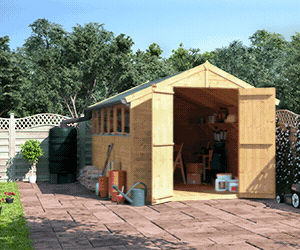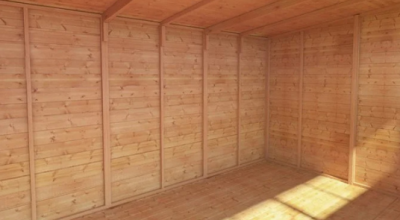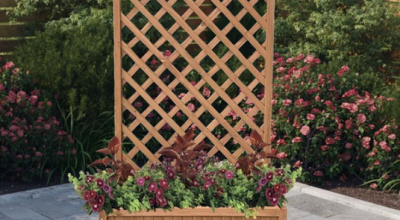Jump to:
Japanese gardens take outdoor landscaping to the next level. There’s art and craft behind those serene and well-poised Zen backyards. So if you’re looking for the best Japanese garden ideas on the entire web – you’re in the right place!
Combine the elements of water and rocks with clean lines to create a tranquil retreat. But how do you get it right and not overdo the landscape?
Simple: take inspiration from these Japanese garden ideas! These life-affirming designs are sure to bring a Zen contemplation to your yard.
Japanese Garden Ideas
1. Moon gate entrance
A moon gate is a wall embedded into the architecture of traditional Japanese gardens. It imitates the shape of the full moon. What an eye-catching and inviting way to welcome your guests to your Zen sanctuary! Get your design started with a Japanese garden arch.

2. Embrace the concept of ‘Ma’
Don’t overdo the landscape; keep the design deliberate. The concept of Japanese ‘Ma’ is all about creating a sense of balance.
There should be movement and stillness in the design. Take a cue from this traditional Japanese garden.

3. Introduce water
Water is an essential element in Japanese gardens. By adding a water feature, you can create an extra dimension to your outdoor space. What’s more, it provides a focal point that offers a sense of peace and tranquillity. Add Japanese garden water features for a peaceful feel.

4. The beauty of empty space
Instead of water, use gravel to give the impression of a dry ocean or river. Dry landscape gardens are famous for using only gravel, rocks and plants. Draw inspiration from this stone garden setting.

5. Vignettes
The philosophy behind this is that not everything will not be visible at once. A great example of this is the Zen winding path below. It leads your eye past the stone pergola, inviting you to see what’s around the next corner.
6. Display pagodas (sekito)
Pagodas are a popular design element from the Edo period. They are one of the most characteristic elements of a Japanese garden. Place one on a hill, half-covered by shrubs – or under trees.
But why not combine contemporary architecture with Japanese zen garden design? Create a modern twist on the Japanese garden stone pagoda like below.

7. Divine low bridge
A simple yet modern design of a Japanese garden bridge made of wood. It may be low, but the style creates a twist, giving an exquisite detail to the garden. Or, if you can afford it – opt for a Japanese garden stone bridge.

8. A room for tea
Another well-known type of Japanese garden, a.k.a. the Japanese tea garden. Connect a tearoom to the yard to encourage your guests and even yourself with meditation.

9. Encourage moss
Japanese garden designs rely on a variety of trees and shrubs. But one distinguishing feature is the extensive use of moss. It’s a signature plant that lends a feeling of antiquity and harmony to the garden.

10. Stones and boulders
In Japanese garden landscaping, rocks are either vertical, arching, reclining or flat. The most common arrangement is one or more groups of three rocks – like this one. Create your own little Japanese rock garden as its own separate space.

11. Tsukubai
A hand washing basin that’s used in Japanese tea gardens. This is a great water feature alternative if a pond can’t fit into your yard.
There’s a stone basin in the middle, and the water flows into the basin through a bamboo tube.

12. Bonsai trees
Bonsai represents harmony in life and the balance of nature. Most Japanese gardens feature this miniature tree to add a Zen-like state to the space.

13. Stone Buddha statue
There’s no better spot to place a Buddha statue than in the garden. You may put one on stone plates in a hidden corner of your Japanese outdoor sanctuary.

14. Grow Japanese Iris
Japanese Irises are the best candidates for Japanese garden blooms, especially for ponds. Enrich even a small pond with a few of these Irises planted around the edge.
Or plant them in groups, where they’ll look better than placed in a row.

15. Rocky outcrop
Definitely one of our favourite rock garden ideas! Add a unique structure of natural stones. Then, plant it with Sedum for year-round colour and interest. Something like this.

16. Cloud pruning
A method of pruning trees and shrubs into shapes resembling clouds. This is an ancient Japanese art, and it’ll be worthwhile to apply the practice in your garden.

17. Pagoda Pillar Stone lanterns
This traditional outdoor lighting can be seen at temples and Japanese gardens. Stone lanterns are great for adding appreciation to your yard during the night.

18. Brace with bamboo
Bamboo has many uses in Japanese gardens. It can act as a natural outdoor screen, offering privacy and shade. Even more, it confers a serenity of flora accompanied by a beautiful rustling of leaves.

19. Strolling garden landscape
Meditating while walking and surrounded by nature is the heart of Japanese gardens. Use raised curving walkways and divide the space into five distinct areas.
Have a look at this sloping garden idea below.

20. All features in one
Include sand, rock and gravel in your landscaping and create the sensation of movement in your courtyard. Install a water feature such as a fountain. Plant a Japanese maple tree in the middle, with a curved bridge above the pond. Then, use a Japanese garden rake to tend to it.
Encourage mosses to spread in nooks and crannies. Take this well-planed Japanese garden as an inspiration.

21. Ceramic stone zen garden bench
22. Shakkei
23. Stone bench
24. Seiza bench
25. Mood lighting
Consider your outdoor lighting options as well when creating Japanese gardens. Whilst it’s nice to enjoy your environment and look at the stars in the evening, it doesn’t mean you can’t spice up your space. Pick solar eco-friendly string lights to lead you down to water features or pagodas at the end of your garden.

26. Feature the Buddha more
Although the Buddha is more often featured in traditional Chinese gardens, there’s still something calming about the figure. Dot them around your Japanese garden as ornaments that bring life to the peace and quiet.
27. Combine with a fairy garden
Why not bring two worlds together? Combine ideas from a fairy garden with Japanese garden ideas. We’re thinking of miniature Japanese garden decor like a tiny bridge or a gravel and rake sandbox.
28. A space for meditation
Find a place for meditation in your brand new Japanese garden. Get zen and aligns your chakras in a gazebo or pagoda where you can set up a mat and give yourself some space.

29. Bamboo
Nothing says Japanese garden like bamboo. Young deep green bamboo is a great way to both add screening and vibrant colour to a garden. Just remember that bamboo roots are invasive and it may not be wise to plant near to borders you share with neighbours.

30. Add some screens
Speaking of screens in your zen garden, why not add a simple folding screen to separate areas? Create a little sanctuary with a park bench or some furniture behind a screen as a place to eat or have a cup of green tea.
31. Add a pavilion
If a gazebo isn’t in-keeping enough with your theme, go all out with a pavilion to create an intimate space. You can position ornaments throughout your Japanese garden that leads visitors to the main building. A pavilion or pagoda can be a safe haven amidst a a larger calming design.

32. Japanese garden plants
Plant traditional Japanese zen garden plants to create an intimate relationship between the natural and manmade elements. Set aside an area for floristry and traditional plants like Japanese sunflowers and Japanese Apricot. Bring a splash of colour to your green space or even plant trees and bushels to offset the stonework. And of course, you can always breathe new life into a space with a Bonsai tree.

33. Zen garden furniture
If you don’t want to install the stone benches we suggested earlier, think about other furniture that encourages zen through comfortable sitting and relaxation. We recommend low furniture and something you can share with a friend or loved one like the Loveseat below.
34. Stonework
Incorporate stone in pedestals, plinths, rockeries and Japanese garden stone ornaments. These offset the natural landscape whilst offering a minimalist feel that’s timeless.

Round-up
Japanese gardens are a work of art. No wonder why many are so captivated by this type of outdoor landscaping.
We hope these ideas will help introduce the Japanese style into your backyard. Might as well check out our Chinese Garden Ideas next for more inspirations!
Shop Rattan Garden FurnitureFAQs
What should be in a Japanese garden?
The basic elements used are stone, plants and water. Remember, a Japanese garden should be kept simple and natural.
What plants go into a Japanese garden?
In addition to bonsai and Japanese maple trees, you can never go wrong with:
- Hakonechloa
- Rhododendrons
- Cherries
- Black pines
and more!
How do you arrange rocks in a Japanese garden?
Rocks in Japanese gardens are usually placed in odd-numbered groupings. Arrange three rocks of varying size and shape.
To create a focal point, form a triangular structure with rocks in similar colour and texture.
What moss is used in Japanese gardens?
The most commonly used mosses in gardens in Japan are haircap, pincushion and rock cap (broom).
How many types of Japanese gardens are there?
Traditional Japanese gardens are categorised into three types:
- Tsukiyama (hill gardens)
- Karesansui (dry gardens)
- Chaniwa gardens (tea gardens)
What's the best stone for a zen garden ?
Light coloured white or silver grey gravel that's small and easily moved with a Zen garden rake is ideal.
How to create a Japanese zen garden?
Use stone, water features, gravel, stone furniture and plants to make your space come alive. Plan carefully and landscape using multiple levels. Incorporate water features for a sense of tranquility.
What's the best Japanese garden design book?
We like The Japanese Garden by Sophie Walker. But check out these other 42 Japanese garden books for more inspiration.













What do you think ?